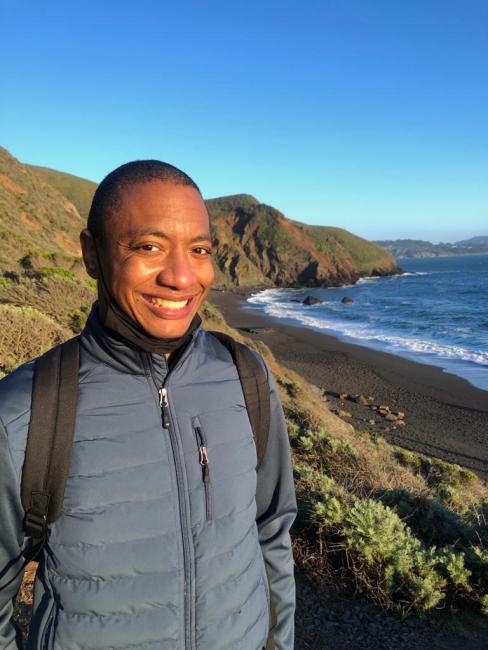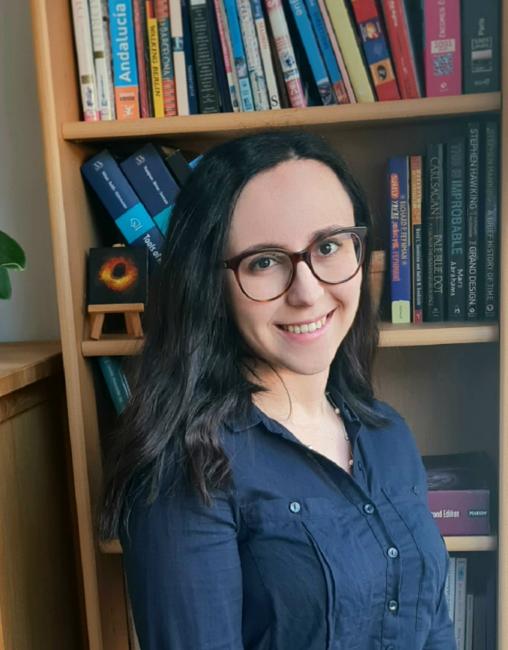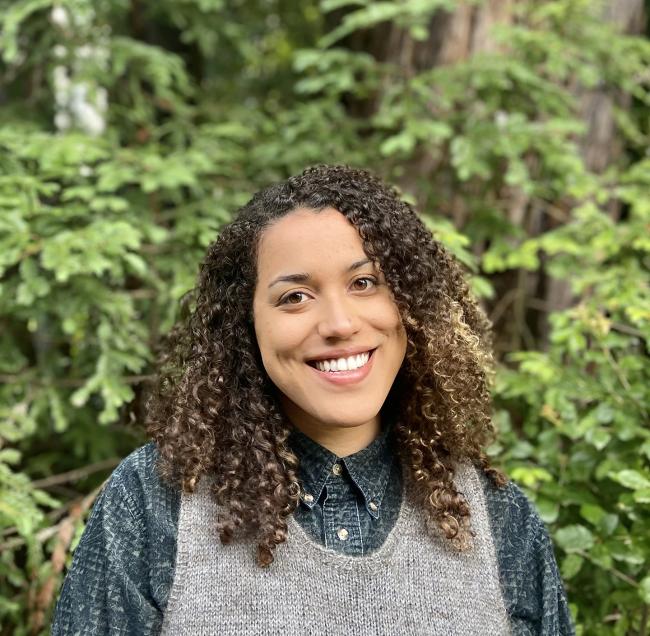Three Incoming Postdoctoral Researchers Awarded NASA Hubble Fellowships
- Does life exist outside of the solar system?
- How do stars and planets form and evolve?
- What do black holes look like?
The Center for Astrophysics | Harvard & Smithsonian will host several NASA Hubble Fellows beginning in the fall of 2021. This year, over 400 applicants applied to the prestigious NASA Hubble Fellowship Program (NHFP); 24 awardees were ultimately selected, three of whom will soon conduct research at the Center for Astrophysics (CfA).
The NHFP enables outstanding postdoctoral scientists to pursue independent research in any area of astrophysics using theory, observation, experimentation or instrument development. The fellowships provide up to three years of support for awardees at the research center of their choosing in the United States.
Once selected, fellows are placed in one of three categories corresponding to broad scientific questions NASA seeks to answer about the universe:
Einstein Fellows: How does the universe work?
Hubble Fellows: How did we get here?
Sagan Fellows: Are we alone?
Learn more about the three incoming NASA CfA fellows and the research they will conduct below.
KIRK BARROW – Hubble Fellow
Host Institution: Harvard University
High-Cadence Radiative Transfer Modeling on Galactic Scales

Kirk Barrow
Kirk Barrow was born in Houston, Texas and grew up in both the United States and Jamaica. After receiving a B.S. and M.S. in aerospace engineering, he went on to receive a doctorate in physics from the Georgia Institute of Technology in Atlanta, Georgia. Since the fall of 2018, Barrow has been a Porat Postdoctoral Fellow at Stanford University and the SLAC National Accelerator Laboratory in Palo Alto, California.
Barrow's research is in computational cosmology with an emphasis on using radiative transfer techniques to create synthetic observations of high-redshift phenomena using simulations. These include studies of star-forming galaxies, Population III stars, massive black-hole formation, emission lines and the escape fraction of ionizing radiation. Recent work has focused on time-domain studies of bursts of star formation and how emission-line signatures evolve on different time scales in response to galactic dynamics. Barrow's interests in aerospace engineering are spacecraft orbital dynamics that leverage gravity assists like those provided by the moons of Saturn to leverage feasible low-thrust solutions to hard-to-reach corners of the Solar System.
As a NHFP Hubble Fellow at Harvard University, Barrow will create predictions and comparisons for upcoming observations from the Keck Observatory and the James Webb Space Telescope, including diagnostics that leverage simulation-trained neural networks to help classify objects at the farthest edge of our observable frontier. Additionally, he will continue to look in the time-domain evolution of high-redshift astrophysical processes.
SARA ISSAOUN – Einstein Fellow
Host Institution: Smithsonian Astrophysical Observatory
Connecting Black Hole Shadows to Multi-Wavelength Accretion and Outflow Physics

Sara Issaoun
Sara Issaoun was born in Algeria and grew up in both Canada and the Netherlands. She graduated with a bachelor's degree in physics from McGill University in 2015 and a master's degree in astrophysics from Radboud University in 2017. She is currently completing her PhD degree in astrophysics at Radboud University under the supervision of Professor Heino Falcke.
Issaoun is an observational astronomer and a member of the Event Horizon Telescope (EHT) collaboration. Her research centers around the collection, calibration, and imaging of millimeter-wave radio observations of supermassive black holes. Supermassive black holes generate the highest energy processes in the known universe, ejecting jets of plasma affecting galaxy environments on large scales, but their dynamics and emission mechanisms remain shrouded in mystery. Issaoun makes use of global networks of radio-telescopes to image and study the immediate surroundings of the supermassive black holes at the centers of our galaxy and the galaxy M87.
As an Einstein Fellow, Issaoun aims to expand millimeter-wave radio-imaging capabilities and forge strong connections between the first images of supermassive black hole shadows and physics probed by partner facilities across the electromagnetic spectrum. Currently, tests of General Relativity via black-hole imaging with the EHT are limited by astrophysical uncertainties of the surrounding accretion flow. Astrophysicists can sharpen these tests using panchromatic studies of these complex environments. Multi-wavelength constraints on accretion-flow properties will critically inform the scientific interpretation of images of black-hole shadows, our understanding of jet-launching mechanisms, black-hole spin measurements, and, ultimately, precision tests of General Relativity.
DIANA POWELL – Sagan Fellow
Host Institution: Smithsonian Astrophysical Observatory
Origins: Relating Protoplanetary Disks to Planetary Atmospheres

Diana Powell
Diana Powell grew up in Austin, Texas and received her undergraduate degree in astrophysics and physics from Harvard University. She moved to California for her graduate studies and will soon complete her PhD in astronomy and astrophysics at UC Santa Cruz where she works with Ruth Murray-Clay and Xi Zhang.
Powell's research focuses on understanding planet formation and evolution through characterizing planetary atmospheres and the planet-forming material in protoplanetary disks. Powell uses the microphysical processes that govern the evolution of small particles (like dust, ice, and clouds) to understand these large-scale phenomena. As a Sagan Fellow, Powell will continue her studies of exoplanet atmospheres and protoplanetary disks. Moreover, she will work to bridge these two sub-fields together to place new constraints on planet formation and evolution.
Related News
NASA's Hubble, Chandra Find Supermassive Black Hole Duo
Event Horizon Telescope Makes Highest-Resolution Black Hole Detections from Earth
CfA Celebrates 25 Years with the Chandra X-ray Observatory
CfA Astronomers Help Find Most Distant Galaxy Using James Webb Space Telescope
Astronomers Unveil Strong Magnetic Fields Spiraling at the Edge of Milky Way’s Central Black Hole
Black Hole Fashions Stellar Beads on a String
M87* One Year Later: Proof of a Persistent Black Hole Shadow
Unexpectedly Massive Black Holes Dominate Small Galaxies in the Distant Universe
Unveiling Black Hole Spins Using Polarized Radio Glasses
A Supermassive Black Hole’s Strong Magnetic Fields Are Revealed in a New Light
Projects
AstroAI
DASCH (Digital Access to a Sky Century @ Harvard)
For that reason, the DASCH (Digital Access to a Sky Century @ Harvard) team are working to digitize the plates for digital storage and analysis. The process can also lead to new discoveries in old images, particularly of events that change over time, such as variable stars, novas, or black hole flares.
GMACS
For Scientists
Sensing the Dynamic Universe
SDU Website